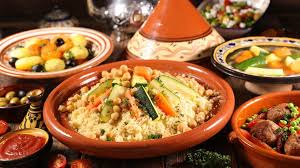Food is more than fuel—it is culture, history, and heritage. Across the African diaspora, traditional foods have long provided nourishment, community, and a deep connection to ancestry. Many of these foods are nutrient-dense, wholesome, and filled with flavors that tell a story. Today, nutrition experts are shining a light on heritage foods that not only honor cultural traditions but also support modern health goals.
In this article, we highlight six healthy heritage food picks from a Black nutritionist—foods that celebrate culture while providing essential nutrients for overall wellness. From ancient grains to leafy greens, these heritage staples remind us that eating well does not mean abandoning tradition.

1. Okra – The Versatile Superfood
Okra, often called “lady’s fingers,” is a staple ingredient across Africa, the Caribbean, and the American South. It is known for its unique texture and versatility in cooking.
Nutritional Benefits
- Rich in fiber, supporting digestive health and blood sugar control.
- A good source of vitamin C and antioxidants, which strengthen immunity.
- Contains folate, crucial for cell growth and particularly important for women of childbearing age.
- The mucilage (the gel-like substance inside) supports gut health and acts as a natural thickener in dishes.
How to Enjoy It
Okra can be enjoyed in gumbo, soups, and stews, or lightly sautéed with spices for a side dish. Roasting okra reduces sliminess and brings out a nutty flavor. It can also be pickled for a tangy, probiotic-rich snack.
6 Healthy Heritage Food Picks from a Black Nutritionist
2. Black-Eyed Peas – A Symbol of Prosperity and Health
Black-eyed peas hold a strong place in African American culinary traditions, especially during New Year’s celebrations, where they symbolize prosperity and luck. Beyond tradition, they are a powerhouse of plant-based nutrition.
Nutritional Benefits
- High in plant protein, making them an excellent meat alternative.
- Packed with iron and magnesium, important for energy production.
- Rich in fiber, supporting heart health and balanced cholesterol levels.
- Low in fat and naturally gluten-free.
How to Enjoy It
Traditionally cooked in dishes like Hoppin’ John or stews, black-eyed peas can also be added to salads, wraps, or veggie burgers. Pairing them with rice creates a complete protein, honoring a long-standing food tradition across many cultures.

3. Sweet Potatoes – The Ancient Root of Strength
Sweet potatoes, native to Africa and widely grown in the Americas, are celebrated for their nutritional richness and culinary versatility. They have long been a dietary staple across many Black communities.
Nutritional Benefits
- An excellent source of beta-carotene, which the body converts into vitamin A for eye and immune health.
- Rich in potassium, which supports heart and muscle function.
- Provide complex carbohydrates for sustained energy.
- Naturally anti-inflammatory due to their antioxidants.
How to Enjoy It
Baked, roasted, mashed, or blended into soups, sweet potatoes are both comforting and nourishing. For a healthier twist, swap regular fries with oven-baked sweet potato fries. They can also be used in pies and desserts for a naturally sweet, nutrient-rich base.
4. Leafy Greens (Collards, Mustard, and Turnip Greens)
Leafy greens are central to Southern and African-inspired cooking. Collards, mustard, and turnip greens have been passed down through generations, often simmered in flavorful broths.
Nutritional Benefits
- High in vitamins A, C, and K, supporting immune strength, vision, and bone health.
- Rich in calcium and iron, essential for bone density and oxygen transport.
- Contain antioxidants that fight oxidative stress and inflammation.
- Fiber-rich, aiding digestion and blood sugar control.
How to Enjoy It
Traditionally simmered slowly with herbs, spices, and smoked meats, greens can also be prepared with lighter, modern methods. Try sautéing them with garlic and olive oil, blending them into smoothies, or tossing them into salads for a fresh twist.
6 Healthy Heritage Food Picks from a Black Nutritionist

5. Millet – An Ancient African Grain
Millet is one of the oldest grains cultivated in Africa, particularly in regions like Ethiopia and West Africa. It is gaining popularity worldwide as a gluten-free, nutrient-packed alternative to refined grains.
Nutritional Benefits
- Rich in magnesium, promoting heart health and muscle relaxation.
- Provides plant protein, making it ideal for vegetarian diets.
- High in fiber, supporting satiety and gut health.
- Naturally gluten-free, making it suitable for those with celiac disease or gluten sensitivity.
How to Enjoy It
Millet can be enjoyed as a porridge, used in grain bowls, or incorporated into breads and flatbreads. It can also be used as a base for salads or pilafs, offering a nutty flavor and fluffy texture.
6. Sorghum – The Resilient, Gluten-Free Grain
Sorghum, another ancient African grain, has been a staple for centuries. It is resilient to drought and remains a vital food source across many African nations.
Nutritional Benefits
- Packed with antioxidants, including phenolic compounds that reduce inflammation.
- High in fiber, aiding digestion and promoting heart health.
- Provides protein and complex carbohydrates for long-lasting energy.
- Gluten-free, making it an excellent substitute for wheat.
How to Enjoy It
Sorghum flour is commonly used for baking bread, pancakes, and muffins. Whole sorghum can be cooked like rice or popped like popcorn for a fun, healthy snack. In some regions, it is also fermented into traditional beverages.
The Cultural Significance of Heritage Foods
Beyond nutrition, these heritage foods carry cultural significance. For many Black communities, preparing and sharing these foods is an act of love, resilience, and remembrance. They represent survival through slavery, migration, and adaptation, while continuing to nourish new generations.
Heritage foods also challenge the misconception that traditional diets are “unhealthy.” In reality, many heritage foods are plant-forward, nutrient-rich, and rooted in sustainability. They emphasize whole ingredients, mindful preparation, and the use of seasonal produce.

Tips for Incorporating Heritage Foods into a Modern Diet
- Balance Tradition with Health: Keep traditional cooking methods but lighten them up by reducing excess salt, sugar, and saturated fat.
- Experiment with Fusion: Blend heritage foods with global cuisines for creative, nutrient-packed meals.
- Choose Whole Ingredients: Use whole grains and fresh produce to maximize nutritional value.
- Cook at Home: Preparing heritage foods at home allows control over ingredients and portion sizes.
- Celebrate Culture: Don’t just eat these foods for health—enjoy them as a celebration of identity and tradition.
Conclusion
Heritage foods are more than recipes—they are history on a plate. From okra and black-eyed peas to ancient grains like millet and sorghum, these foods connect us to cultural roots while promoting health and wellness. By embracing these six healthy heritage food picks from a Black nutritionist, we not only nourish our bodies but also honor the resilience and creativity of generations before us.
Incorporating these foods into daily meals is a way to reclaim traditions, celebrate heritage, and embrace holistic wellness. Whether you’re enjoying a bowl of millet porridge, a pot of simmered collard greens, or a roasted sweet potato, remember that each bite carries both nourishment and a story.
